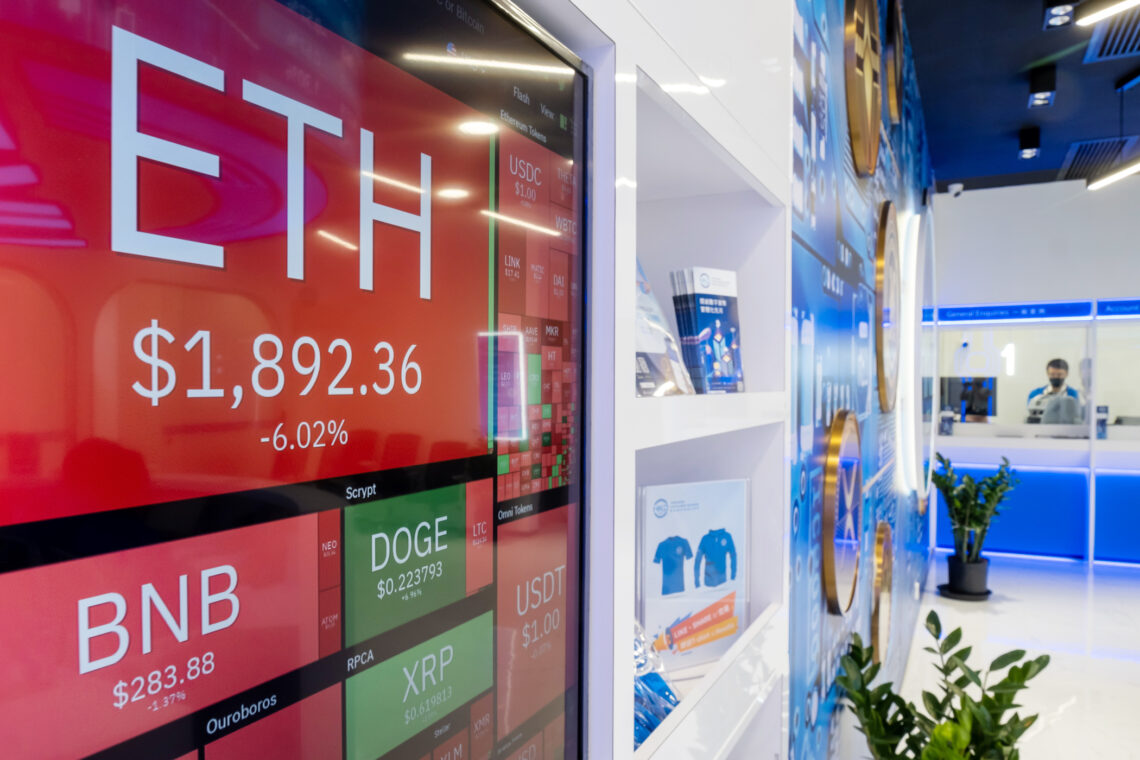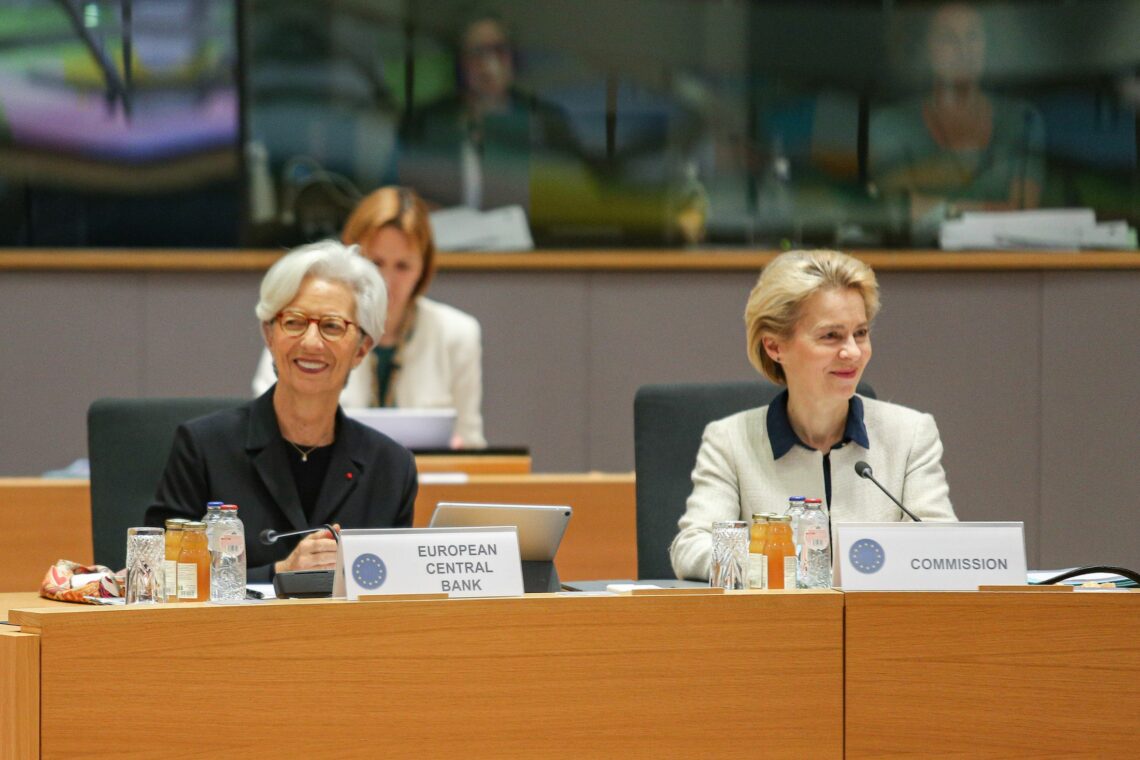The EU’s proposed regulation of markets in crypto assets
Decentralized finance is poised to revolutionize the traditional financial system. In the name of seizing the crypto opportunity, the European Commission has set out an ambitious regulatory plan. But the pursuit of too many goals could throttle innovation.

In a nutshell
- DeFi is set out to revolutionize both blockchain and finance
- Proposed regulations are pursuing a range of conflicting goals
- Small, innovative crypto players may be stunted
Cryptocurrencies are no longer a marginal phenomenon limited to nerdy online communities. They are increasingly acquired by companies, investment funds and ordinary people. Blockchain-based finance or “decentralized finance” (DeFi), until recently a niche market, has grown exponentially over the past year.
DeFi on the move
So-called “stablecoins” are at the heart of DeFi. These are privately issued cryptocurrencies pegged to conventional assets, often a government-issued currency or a precious metal. The purpose is to minimize the disturbing price fluctuations that unpegged digital currencies like Bitcoin have experienced since their inception. DeFi currencies include Aave, Compound, Loopspring, Maker or Uniswap, and most are built on the Ethereum blockchain.
For its supporters, DeFi will revolutionize both the blockchain industry (technology) and traditional, centralized finance (money). It promises a genuine alternative financial system – one that is built bottom-up, open to everyone, permissionless and low-fee. Transactions are based on self-executing (“smart”) contracts using open-source code; a typical example is automated lending, or the borrowing of crypto loans.
DeFi makes available a range of other financial services, including payments, trading, asset management, derivatives or insurance. There are no intermediaries involved, no supervisors, no central servers. The peer-to-peer architecture of blockchain allows cryptocurrencies to be transferred anywhere in the world, instantly. Users have full control – but also bear the full risk. Detractors point to risks inherent in markets that are still mostly unregulated and unsupervised. To them, DeFi platforms raise challenges not only for investors, but potentially even for financial stability.
For instance, European Central Bank (ECB) President Christine Lagarde continues to insist that cryptocurrencies are nothing but “highly speculative” assets. In a January press conference, she further accused their traders of conducting some “funny business” and “totally reprehensible money laundering activity.” The European Parliament, too, worries that users turn to cryptocurrencies to conceal market manipulation, fraud, terrorist financing, drug trafficking or tax evasion. It is unanimously urged that common rules should be implemented at a global level to correct this type of market failure. The claim that cryptocurrencies are used mainly for illicit financing is widespread among EU regulators, but the data shows otherwise. According to a recent Crypto Crime Report, the vast majority of virtual currencies are not used for criminal activity. Cryptocurrency-related crime only represents a small part of the overall crypto economy, proponents argue – and it appears to be declining, falling from 2.1 percent in 2019 to 0.34 percent in 2020.
Instrumental goals
Interestingly, the European Commission (EC) seems to be taking a more open-minded view on cryptocurrency activity than its peer institutions – at least on the surface. President Ursula von der Leyen repeatedly emphasized the need for legislators and policymakers to understand how to “make the most of the opportunities” offered by crypto markets and, at the same time, mitigate the “new risks” they pose.
She is clearly not willing to go down the road of influential countries like China or India, which have chosen to implement extremely strict policies against cryptocurrencies, at the risk of obstructing the development of innovative sectors. Other major economies, such as the United States, may be more crypto-friendly, but are struggling to make progress because of internal inconsistencies between their numerous local, state and federal regulatory requirements.
Regulators seem wary of the emerging global digital finance players.
The European Commission’s underlying message is that in the current, largely divided, international context, the EU could take on a leading role in global crypto-legislation. To that end, it would need to overcome its own intergovernmental tensions and policy fragmentation. More than this, the EC seems to think that filling the regulatory void could be a means for the EU to become a world leader in blockchain technology. In a way, it assumes that pursuing one goal (regulation) is an instrument for achieving another (strategic market positioning).
Such a claim is not far-fetched. The EC states that it wants the EU to become not just an intensive user of blockchain technology, but an “innovator”and a “home to significant blockchain platforms, applications and companies.” Seizing this opportunity is all the more urgent, a Stanford Law School blockchain expert claims, since other vanguard technologies are already out of the EU’s reach in global competition. That was the path taken in, among others, artificial intelligence and cloud computing, now dominated by China and the U.S., respectively.
New regime
Eager to develop its dual competitive advantage, on September 24, 2020, the EC released an ambitious proposed regulation for “markets in crypto-assets” (MiCA). A first draft of the 168-page document had been leaked two weeks before. In substance, MiCA seeks to establish uniform rules for all types of “crypto-assets” that fall outside the scope of the EU’s existing legislation on financial services. This seems to be the case for a vast majority of virtual assets, including stablecoins, which are categorized as either “asset-referenced tokens” (ARTs) or “e-money tokens” (EMTs).
Issuers of ARTs and EMTs are undeniably one of MiCA’s main target groups. They are subjected to a myriad of particularly stringent requirements, whether in terms of authorization, authentication, disclosure, transparency, due diligence or the constitution of liquidity and capital buffers. Crypto-asset service providers, for their part, must observe numerous regulatory dispositions similar to those imposed on traditional financial services firms, notably with respect to Know-Your-Client standards or customer asset safeguarding. In addition, they must obey strong reporting, prudential and organizational requirements.
The risk of setting too many goals is that none of them may be achieved properly.
Noncompliance is threatened with large fines and the withdrawal of authorization. The EC would give extensive investigative, supervisory and sanction powers to the European Banking Authority (EBA). In fact, MiCA replicates many of the dispositions of the Markets in Financial Instruments Directive and Regulation (MiFID II/MiFIR), which entered into force in January 2018. The two frameworks follow a similar logic and pattern. They are also plagued by the same flaws.
Regulatory web
When writing rules, EU regulators tend to overdo it, and MiCA is no exception. Not only does it come with a batch of annexes, technical standards, impact assessments and other accompanying papers; it is itself the centerpiece of a broad-based Digital Finance Package, which includes (besides a Digital Finance Strategy and a Retail Payment Strategy) a range of additional legislative or regulatory proposals.
These include:
- One calling for greater “digital operational resilience,” addressing among others the issue of cyber threats;
- One introducing a “pilot regime for market infrastructures based on distributed ledger technology” (DLT), the idea being to set up so-called “regulatory sandboxes” allowing certain providers of DLT and blockchain services to experiment with innovative technologies in a “safe” (i.e., strictly supervised) environment;
- One setting out to clarify and amend a number of related EU-financial services rules; notably the revision of the EU’s 2019 whistleblower directive.
Two further pending EU laws aiming to place more control over Big Tech firms – the Digital Services Act and the Digital Markets Act – could also be involved, as these companies are increasingly engaging in financial services.
MiCA also intends to connect the dots in the EU’s existing legislative galaxy, such as the anti-money laundering, counterterrorist financing and tax-evasion frameworks. In theory, these far-reaching policies already apply to crypto-assets (notably the Anti-Money Laundering Directive or AML V). However, they are very difficult to implement in practice, the Commission laments, hoping that MiCA would repair some of their shortcomings. MiCA is determined to pursue, all at the same time, a plethora of valuable but potentially conflicting goals.

Some of the explicit and implicit aims that pop up in the proposal: protect consumers and investors, enhance the safety and efficiency of payment systems, preserve data privacy, detect and eliminate money laundering and other fraud-related risks, counter the financing of terrorism, prevent market abuse, promote fair competition, support innovation, ensure financial stability, harmonize national frameworks, and establish regulatory clarity and legal certainty.
But the risk of setting too many (sometimes vaguely defined) goals is that, in the end, none of them will be achieved properly. As the Association for Trusted Blockchain Applications (INATBA) has pointed out, the Commission’s proposal contains several provisions that contradict even its own objectives. One example is the principle of “technological neutrality,” which is stated but not really applied. Permissionless blockchain platforms such as those used by DeFi are omitted by the MiCA regulation – even though DeFi is one of the most rapidly growing and innovative sectors in alternative finance today.
According to INATBA, the proposed regulation furthermore adopts a traditional “entity-centric allocation of liabilities,” in total disregard of the purely decentralized reality of much of DeFi. In addition, MiCA seems to prefer established credit institutions, investment firms and payment institutions over companies involved exclusively in DeFi projects.
Antitrust paradox
Unintentionally, the proposed regulation could also result in preferential treatment for global corporations whose recent diversification into financial services could enable an increase in market dominance. This certainly goes against MiCA’s antitrust commitment, which appeared particularly important to the proposal’s drafters.
On one hand, regulators seem wary of the emerging global digital finance players (Big Fintechs), among whom several have already started to work on crypto initiatives. An example of “global stablecoin” is Facebook’s cryptocurrency Libra (recently rebranded Diem), which may soon become available to the social network’s 2.8 billion monthly active users (of which 423 million are in Europe).
On the other hand, the fact that MiCA – like any other law – will apply equally to all crypto market participants is likely to disadvantage the smaller players. Indeed, for all actors involved, MiCA entails internalizing, understanding, interpreting and complying with hundreds of pages of complicated new rules.
Moreover, the idea behind this new generation of EU regulations is to compel firms to use digital technology for regulatory purposes. Rules written in normal legal language are to be replaced as much as possible with computer code. While many of MiCA’s requirements may be automated at least to some extent (digital reporting, notably), others may appear perplexing to the regulated crypto-asset providers. For example, how to notify supervisory authorities – in a “machine-readable” format – that their managers and shareholders are “fit and proper” for the purpose of money laundering?
Evidently, the adoption of Regulatory Technology (RegTech) software comes at a high cost. Large and well-established financial and technology firms, which can count on effective in-house compliance and legal departments, may already find this challenging. Smaller firms, which for most will need to pay the services of specialized RegTech providers, can be expected to struggle.
What if closing the European gateway to DeFi is the regulation’s real goal?
Furthermore, the proposed regulation, eager to combat any form of financial speculation, prohibits the granting of interest rates on stablecoins – to ensure that they are “mainly used as a means of exchange and not as a store of value.” This disposition could adversely affect crypto-asset providers’ business models, by depriving users of a fundamental incentive to go on DeFi platforms. Once again, it is the smallest players – those who cannot cross-subsidize their activities into other markets – that will be hit the hardest. Overburdened by insurmountable compliance requirements, many cryptocurrency start-ups will be forced out of business. Others might leave the EU before MiCA enters into force, presumably by 2024. As a result, just a few years from now, promising emerging markets such as DeFi could cease to be accessible to Europeans.
Helping the largest market providers get rid of smaller competitors, thus stifling innovation in digital finance, is the exact opposite of MiCA’s stated intention. Once adopted, the regulation could turn into a “policy at war with itself” to use a phrase of Robert Bork, whose 1978 work on the American “antitrust paradox” is as relevant as ever. But what if closing Europe’s gateway to DeFi is the regulation’s goal? Enabling EU governments to keep control over money could be what MiCA is ultimately about.







